($13): Malbec has achieved popularity in this country because it can produce a big juicy red wine with mild or little tannic structure. The 2015 Malbec from Alamos fits that profile perfectly. Soft and fruity, it’s ideal for people searching for an inexpensive big red to have either before dinner or with hearty fare.… Read more
Category Archives: Reviews
Cadaretta, Columbia Valley (Washington) Cabernet Sauvignon 2012
($40): This lovely young Cabernet Sauvignon delivers a balanced, palate-pleasing combination of dark fruit, herbs and other savory notes. Its suave tannins make this wine quite approachable and enjoyable now. A pleasant contrast to big, overblown Cabernets, Cadaretta’s emphasizes elegance over power.… Read more
La Crema, Sonoma Coast (Sonoma County, California) Pinot Noir 2014
($25): La Crema’s Sonoma Coast Pinot Noir emphasizes the red cherry fruit nature of the variety. To their credit, the fruit flavors are fresh, not jammy, and not overdone. A whiff of savory notes appears in the background. Appealing tart cherry notes are apparent in the finish in keeping with the wine’s fruity profile. … Read more
Castello di Volpaia, Maremma DOC (Tuscany, Italy) Vermentino “Prelius” 2014
($14, Wilson Daniels): If you thought Castello di Volpaia was a great producer of Chianti Classico, you would be correct. But they also produce this bargain-priced Vermentino that shouldn’t be missed. Beautifully fresh, saline tinged, with uplifting acidity, it’s hard to find a better match for steamed clams or other simply prepared seafood. … Read more
Stemmari, Sicilia DOC (Sicily, Italy) Grillo 2014
($11, Prestige Wine Imports): Stemmari works wonders with indigenous Sicilian varieties, such as Grillo. This one delivers an emblematic, ever so slightly bitter, saline component that makes it a delightful match for hearty seafood, perhaps in a tomato-based sauce, but less useful as a stand-alone aperitif. … Read more
Nativ, Greco di Tufo DOCG (Campania, Italy) 2014
($24, Montcalm Wine Imports): Nativ’s Greco di Tufo, one of Campania’s signature white wines, conveys a stony, almost volcanic essence, which is not surprising since this grape grows well on Vesuvius’s soil. A tinge of bitterness in the finish buttressed by bracing acidity catapults this wine into the “easy-to-recommend” category because it’s a serious wine that delivers more than the price suggests. … Read more
Nativ, Fiano di Avellino DOCG (Campania, Italy) 2014
($28, Montcalm Wine Imports): 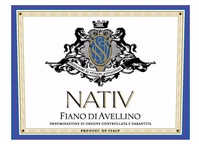 Nativ’s Fiano is a bit more floral than their Greco di Tufo. Instead of transmitting a sense of volcanic ash, it conveys a delicate white flowery sensation. It’s also a touch weightier and more tropical than their Greco. … Read more
Nativ’s Fiano is a bit more floral than their Greco di Tufo. Instead of transmitting a sense of volcanic ash, it conveys a delicate white flowery sensation. It’s also a touch weightier and more tropical than their Greco. … Read more
Château Lassègue, St. Emilion Grand Cru (Bordeaux, France) “Les Cadrans de Lassègue” 2012
($29, Jackson Family Wines): 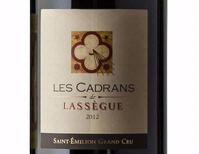 This, the second wine of Château Lassègue, a property in the Jackson Family portfolio, is a marvelous buy. More polished than many second wines, it conveys a savory, almost funky — in a nice way — complement to its bright fruity flavors. … Read more
This, the second wine of Château Lassègue, a property in the Jackson Family portfolio, is a marvelous buy. More polished than many second wines, it conveys a savory, almost funky — in a nice way — complement to its bright fruity flavors. … Read more
Bodegas Septima, Mendoza (Argentina) Malbec “Obra” 2014
($25, Aveníu Brands):  Obra, the reserve wine of Bodegas Septima, is a cut above the usual Malbec both in taste and in price. Good acidity and vibrancy balances its thick and juicy profile without being aggressive or harsh. This big red wine would be a good choice for robust grilled meats this fall.… Read more
Obra, the reserve wine of Bodegas Septima, is a cut above the usual Malbec both in taste and in price. Good acidity and vibrancy balances its thick and juicy profile without being aggressive or harsh. This big red wine would be a good choice for robust grilled meats this fall.… Read more
Presqu’ile, Santa Maria Valley (California) Sauvignon Blanc 2015
($22): I have been impressed by the Chardonnay coming from Presqu’ile and now see that they do equally well with Sauvignon Blanc. This one, from their vineyard in Santa Maria Valley, is, in a word, balanced. Pleasantly herbal, as opposed to grassy, there’s an ever so slight roundness to its texture, as though the coarse edges of Sauvignon Blanc have been sanded. … Read more
Route Stock, Napa Valley (California) Sauvignon Blanc 2015
($17): Route Stock has managed to achieve harmonious balance in this Sauvignon Blanc. Without losing its distinctive cutting edginess, a subtle creaminess offsets the potential shrillness characteristic of the varietal. Nicely aggressive, delivering just the right about of pungency, it has a finish and delivers a complexity often lacking in Sauvignon Blanc. … Read more
Duckhorn Vineyards, Napa Valley (California) Sauvignon Blanc 2015
($30): Duckhorn Vineyards continues to impress despite their long and stellar track record. Perhaps best known for their powerful, yet elegant, Napa Valley Cabernet Sauvignon and Merlot, they also make noteworthy Chardonnay and, judging from this example, Sauvignon Blanc. They also know what they can — and cannot — do in Napa. … Read more
J. Lohr, St. Helena (Napa Valley, California) Cabernet Sauvignon Carol’s Vineyard 2013
($60): One of the joys of tasting Cabernet Sauvignon from J. Lohr is that they show the diversity of California terroir. Tasted side-by-side, this one from a single vineyard in St. Helena in Napa Valley and their “Hilltop” Cabernet Sauvignon ($35, 89 points) from their vineyards in Paso Robles make a fascinating comparison. … Read more
Martin Ray, Napa Valley (California) Cabernet Sauvignon “Synthesis” 2013
($50): The big, heavy, oversized bottle makes me not want to like this wine. But the first whiff — a combination of red fruits and earthiness — wins you over easily. It delivers cherry-like fruit and minerals woven into a fine texture. … Read more
Quinta da Lagoalva de Cima, Vinho Regional Tejo (Portugal) Arinto/Chardonnay Reserva 2015
($15): Tejo, formerly known as Ribatejo, is a region just across the Tagus River from Lisbon, which is now starting to focus on higher quality wines rather than their traditional bulk production. This blend of Arinto, a grape indigenous to the Iberian Peninsula, and Chardonnay works well.… Read more
Vento di Mare, Terre Siciliane IGT (Sicily, Italy) Nero d’Avola 2014
($12, Middleton Family Wines): Vento di Mare continues their streak of bargain-priced wines with this Nero d’Avola, Sicily’s iconic red grape. Similar to its Grillo and Pinot Grigio made from organic grapes, this Nero d’Avola delivers surprising complexity, both fruity and savory notes, for such a modest price. … Read more
Kir-Yianni, Amyndeon (Greece) “Akakies” Sparkling Dry Rosé 2014
($21, Diamond Wine Importers):  The rising prices of Champagne coupled with the increasing popularity of all kinds of bubbly wine has necessitated thinking outside of the box. Outside the box for many might be Crémant de Bourgogne or even a sparkling Vouvray. … Read more
The rising prices of Champagne coupled with the increasing popularity of all kinds of bubbly wine has necessitated thinking outside of the box. Outside the box for many might be Crémant de Bourgogne or even a sparkling Vouvray. … Read more
Paumanok, North Fork of Long Island (New York) Chenin Blanc 2014
($28): Chenin Blanc is a tough grape to transform into a balanced wine in North America because a little extra ripeness from the warmth of the growing season translates into an overly fruity and flabby wine. But when a winery hits it just right, as the team at Paumanok does on a regular basis, Chenin Blanc is an ideal summertime choice. … Read more
Paumanok, North Fork of Long Island (New York) Dry Rosé 2015
($18): As regular WineReviewOnline readers know well, I am not swept away by the tsunami of enthusiasm for rosé, often preferring to chill a light red wine, which makes my reaction to this one all the more startling. Made from Cabernet Franc, this rosé is dry and crisp with lots of character. … Read more
Castello di Meleto, Chianti Classico (Tuscany, Italy) 2013
($22, Vias Imports): 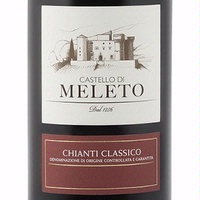 A blend of mostly (95%) Sangiovese and Malvasia Nero, this Chianti Classico delivers a harmonious contrast of herbal earthy flavors intermingled with pure fruity ones. Hallmark Tuscan acidity and firm tannins provide structure without being aggressive or intrusion. … Read more
A blend of mostly (95%) Sangiovese and Malvasia Nero, this Chianti Classico delivers a harmonious contrast of herbal earthy flavors intermingled with pure fruity ones. Hallmark Tuscan acidity and firm tannins provide structure without being aggressive or intrusion. … Read more
Vento di Mare, Terre Siciliane IGT (Sicily, Italy) Grillo 2014
($12, Middleton Family Wines): As with their Pinot Grigio, Vento di Mare produces two wines, one from organic and one from conventional grapes, from Grillo, an indigenous Sicilian grape. This Grillo, from organic grapes, is slightly richer with a better texture and complexity compared to the one made from conventionally grown grapes. … Read more
Vento di Mare, Terre Siciliane IGT (Sicily, Italy) Pinot Grigio 2014
($12, Middleton Family Wines): Vento di Mare produces two Pinot Grigios in Sicily — this one made from organically grown grapes, and one made from conventionally grown grapes. They’re very different wines. This one, from organically grown grapes, is slightly less floral, less fruity, leaner and more angular. … Read more
Stemmari, Sicilia DOC (Italy) Nero d’Avola 2014
($10, Prestige Wine Imports): Nero d’Avola, Sicily’s “red grape,” has the ability to deliver both fruity and savory notes simultaneously even when young, as it does in this wine. Stemmari’s delivers savory nuances of herbs and olives, which make a lovely counterpoint to the bright red fruit elements. … Read more
Fontana Candida, Frascati Superiore DOCG Riserva (Lazio, Italy) “Luna Mater” 2012
($23, Banfi Vintners):  Fontana Candida’s Luna Mater will transform your image of Frascati, typically a light refreshing, but otherwise undistinguished, white wine. Well, Luna Mater is certainly distinguished. It’s not just more concentrated than the usual Frascati — though it is. … Read more
Fontana Candida’s Luna Mater will transform your image of Frascati, typically a light refreshing, but otherwise undistinguished, white wine. Well, Luna Mater is certainly distinguished. It’s not just more concentrated than the usual Frascati — though it is. … Read more
Cerulli Spinozzi, Pecorino Colli Aprutini IGT (Abruzzo, Italy) “Cortalto” 2014
($15): Cortalto’s a wine to buy by the case. The pleasing bite of Pecorino, the grape, could remind consumers of the cheese. Cerulli Spinozzi, one of the top producers in Abruzzo, manages to combine the attractive bite with good concentration and uplifting acidity in this fresh and lively wine. … Read more
Vigneau-Chevreau, Vouvray (Loire Valley, France) “Cuvée Silex” 2014
($21, Michael Corso Selection): I love Vouvray. My frustration with the wines is that it’s often difficult to tell the level of sweetness before pulling the cork. Thankfully, this one, labeled Sec, accurately describes the wine. It captures the tension — the steely dryness combined with a delicate fruitiness — that makes Vouvray so invigorating. … Read more
Jo Landron, Muscadet Serve-et-Maine Sur Lie (Loire Valley, France) “La Louvetrie” 2014
($13, Martin Scott): Muscadet remains one of the great bargains for white wines because it still has a down-market image despite the work and talents of producers, such as Jo Landron who, along with this wife, owns the Domaine de la Louvetrie. … Read more
Migration, Russian River Valley (Sonoma County, California) Chardonnay 2014
($32): Migration, initially the second label of Decoy, Duckhorn’s Pinot Noir-focused outpost in Anderson Valley, now has its own home in Sonoma County. It’s a first wine in its own right. And though the focus was — and is — on Pinot Noir, it turns out, at least judging from this wine, they do a fine job with Chardonnay. … Read more
Grgich Hills Estate, Napa Valley (California) Dry Fumé Blanc 2014
($31): When it comes to winemaking, Grgich Hills Estate can do no wrong. Of course it excels with Chardonnay. Miljenko “Mike” Grgich made the Chardonnay when he was at Chateau Montelena that instantly put California wine on the map when judges — French no less — placed it first, besting prestigious white Burgundies in a blind tasting, the so-called Judgment of Paris, forty years ago. … Read more
Bonny Doon Vineyard, Arroyo Seco (Monterey County, California) Beeswax Vineyard “Le Cigare Blanc” Reserve 2013
($28): 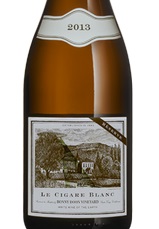 Le Cigare Blanc, the white counterpart of Bonny Doon’s Cigare Volant, which emulates the red wine of Châteauneuf-du-Pape, is a typical Rhône blend: Roussanne (55%), Grenache Blanc (26%), and Picpoul Blanc. It’s a lovely interpretation of a white Rhône with stone fruit richness and sufficient balancing acidity to keep it interesting, but not so much as to make your mouth pucker. … Read more
Le Cigare Blanc, the white counterpart of Bonny Doon’s Cigare Volant, which emulates the red wine of Châteauneuf-du-Pape, is a typical Rhône blend: Roussanne (55%), Grenache Blanc (26%), and Picpoul Blanc. It’s a lovely interpretation of a white Rhône with stone fruit richness and sufficient balancing acidity to keep it interesting, but not so much as to make your mouth pucker. … Read more
Grgich Hills Estate, Napa Valley (California) Cabernet Sauvignon Estate Grown 2013
($69): 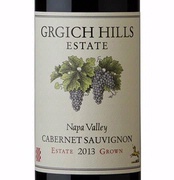 This wine shows the beauty of Napa Valley Cabernet. Not bigger, but just a more muscular style of Cabernet Sauvignon than is the norm, the 2013 Grgich Hills Estate Cabernet Sauvignon has extraordinary finesse. It’s truly an iron fist in a velvet glove. … Read more
This wine shows the beauty of Napa Valley Cabernet. Not bigger, but just a more muscular style of Cabernet Sauvignon than is the norm, the 2013 Grgich Hills Estate Cabernet Sauvignon has extraordinary finesse. It’s truly an iron fist in a velvet glove. … Read more
Jordan, Alexander Valley (Sonoma County, California) Cabernet Sauvignon 2012
($55): 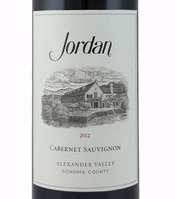 Jordan consistently makes a beautifully graceful Cabernet Sauvignon. The 2012 is even more so, full-flavored, yet elegant with a suave texture. Although a mouth-filling wine, it is not heavy. It impresses with its elegance and complexity, not brute force. Layers of red and black fruit flavors intermingle with herbal earthy notes. … Read more
Jordan consistently makes a beautifully graceful Cabernet Sauvignon. The 2012 is even more so, full-flavored, yet elegant with a suave texture. Although a mouth-filling wine, it is not heavy. It impresses with its elegance and complexity, not brute force. Layers of red and black fruit flavors intermingle with herbal earthy notes. … Read more
Frescobaldi, Toscana IGT (Italy) “Mormoreto” 2011
($62): 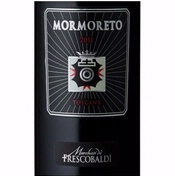 So-called international blends in Tuscany can be fabulous or a heavy-handed disaster. Put Frescobaldi’s Mormoreto into the former category. The winemaking team there clearly knows what it’s doing. The 2011 Mormoreto, a typical Bordeaux blend of Cabernet Sauvignon (45%), Cabernet Franc (30%), Merlot (20%), and Petit Verdot, brings together a marvelous mixture of fruity elements, savory nuances and a firm minerality. … Read more
So-called international blends in Tuscany can be fabulous or a heavy-handed disaster. Put Frescobaldi’s Mormoreto into the former category. The winemaking team there clearly knows what it’s doing. The 2011 Mormoreto, a typical Bordeaux blend of Cabernet Sauvignon (45%), Cabernet Franc (30%), Merlot (20%), and Petit Verdot, brings together a marvelous mixture of fruity elements, savory nuances and a firm minerality. … Read more
Illuminati, Montepulciano d’Abruzzo Colline Teramane (Abruzzo, Italy) “Pieluni” Riserva 2010
($70, Montcalm Wine Imports): This wine dispels any notion that truly great wines are not made in Abruzzo from the Montepulciano grape. Yes, the nomenclature is confusing: Montepulciano, the grape, has nothing to do with Montepulciano the village in Tuscany known for Vino Nobile di Montepulciano, which uses the Sangiovese grape. … Read more
Domaine du Poujol, Pays D’Hérault IGP (Languedoc, France) Carignan Blanc Vieilles Vignes 2014
($16, Ideal Wines & Spirits): 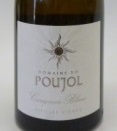 Phil Minervino, one of the owners of a Newton Lower Falls Wines, a jewel of a wine shop outside of Boston, and a superb taster, recommended this somewhat obscure wine to me. As he said, “No one comes in asking for Carignan Blanc.” … Read more
Phil Minervino, one of the owners of a Newton Lower Falls Wines, a jewel of a wine shop outside of Boston, and a superb taster, recommended this somewhat obscure wine to me. As he said, “No one comes in asking for Carignan Blanc.” … Read more
Alcance, Maule Valley (Central Valley, Chile) Carmenere Gran Reserva 2013
($22): 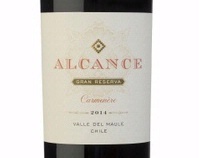 This Carménère from Alcance, a Chilean winery under the umbrella of the Jackson Family Wines Collection, is a good introduction to this grape. Carménère was formerly planted in Bordeaux but has fallen out of favor there because it is a late-ripening variety that often failed to reach maturity there. … Read more
This Carménère from Alcance, a Chilean winery under the umbrella of the Jackson Family Wines Collection, is a good introduction to this grape. Carménère was formerly planted in Bordeaux but has fallen out of favor there because it is a late-ripening variety that often failed to reach maturity there. … Read more
Alcance, Maule Valley (Central Valley, Chile) Cabernet Sauvignon Gran Reserva 2014
($24): 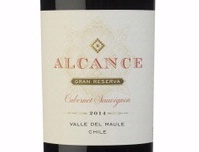 This is a marvelous $24 bottle of Cabernet Sauvignon. Black fruit flavors, a savory green olive component and the structure provided by its suave tannins means it’s a great choice to accompany a slab of beef this summer or fall. … Read more
This is a marvelous $24 bottle of Cabernet Sauvignon. Black fruit flavors, a savory green olive component and the structure provided by its suave tannins means it’s a great choice to accompany a slab of beef this summer or fall. … Read more
Nicolas Jay, Willamette Valley (Oregon) Pinot Noir 2014
($65): Full disclosure: I love the wines from Burgundy’s Domaine Méo-Camuzet, so I could be prejudiced towards any project involving Jean-Nicolas Méo. That said, it’s hard to imagine not raving about this wine. Music mogul Jay Boberg and Jean-Nicolas have teamed up to make Pinot Noir in Oregon. … Read more
Migration, Santa Maria Valley (Central Coast, California) Pinot Noir Bien Nacido Vineyard 2013
($68): One of the things I love about Migration’s Pinot Noirs is that their vineyard designation is not a marketing tool, but rather reflects where the grapes are grown. Take this one from the Bien Nacido Vineyard. Riper fruit flavors dominate with fewer savory elements compared to their 2013 Dutton Ranch bottling (previously reviewed). … Read more
Fattoria di Grignano, Chianti Rufinà Riserva (Tuscany, Italy) Poggio Gualtieri 2011
($20, Montcalm Wine Imports): Chianti Rufinà region sometimes is overshadowed by Chianti Classico region, which is a shame because wines from the former often deliver more savory notes. Fattoria di Grignano’s fine example marries dark cherry-like fruit, earthy qualities with uplifting freshness and energy. … Read more
Stemmari, Terre Siciliane IGT (Sicily, Italy) Rosé 2015
($10, Prestige Wine Imports): 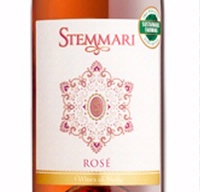 Inexpensive rosés are popping up all over — like mushrooms after a rain — in response to enormous consumer demand for the pink drink. Consumers need care in choosing because many of these “value” wines turn out to be no value at all, which makes this one from Sicily all the more enjoyable. … Read more
Inexpensive rosés are popping up all over — like mushrooms after a rain — in response to enormous consumer demand for the pink drink. Consumers need care in choosing because many of these “value” wines turn out to be no value at all, which makes this one from Sicily all the more enjoyable. … Read more
Vivera, Etna Rosso DOC (Sicily, Italy) “Martinella” 2011
($40, Montcalm Wine Imports): The more I taste wines grown on the slopes of Mount Etna, the more I like them because they have a Burgundian sensibility about them — what I call flavor without weight. This wine, a blend of Nerello Mascalese and Nerello Cappuccio, the two grapes typically grown on Etna, is both fragrant and mineraly.… Read more
Lunae Bosoni, Colli di Luni DOC (Liguria, Italy) Vermentino “Etichetta Grigia” 2015
($25, Montcalm Wine Imports):  If you see Lunae Bosoni’s name on a label, buy the wine. This producer is consistently top-notch, whether it’s a white wine, like this Vermentino, a rosé — their Mea Rosa is stunning — or a red. … Read more
If you see Lunae Bosoni’s name on a label, buy the wine. This producer is consistently top-notch, whether it’s a white wine, like this Vermentino, a rosé — their Mea Rosa is stunning — or a red. … Read more
Lunae Bosoni, Liguria di Levante IGT (Liguria, Italy) “Mea Rosa” 2015
($25, Montcalm Wine Imports): 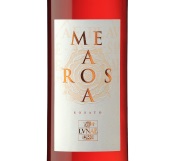 Readers know I’m not swept away by the tsunami of enthusiasm for rosé, often recommending chilling a light red instead. Well, this rosé makes me reassess my opinion of the category. Made entirely from Vermentino Nero, an autochthonous grape from Liguria, it has layers of flavor that impart character. … Read more
Readers know I’m not swept away by the tsunami of enthusiasm for rosé, often recommending chilling a light red instead. Well, this rosé makes me reassess my opinion of the category. Made entirely from Vermentino Nero, an autochthonous grape from Liguria, it has layers of flavor that impart character. … Read more
Lunae Bosoni, Colli di Luni Rosso DOC (Liguria, Italy) “Auxo” 2012
($25, Montcalm Wine Imports): 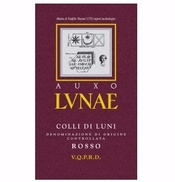 Though the Colli di Luni Rosso DOC straddles two regions, Liguria and Tuscany, the blend is typically Tuscan, Sangiovese (70%) with Cannaiolo and Ciliegiolo. A balanced wine, it achieves roundness and generosity without being overtly fruity of flabby.… Read more
Though the Colli di Luni Rosso DOC straddles two regions, Liguria and Tuscany, the blend is typically Tuscan, Sangiovese (70%) with Cannaiolo and Ciliegiolo. A balanced wine, it achieves roundness and generosity without being overtly fruity of flabby.… Read more
Illuminati, Montepulciano d’Abruzzo DOC (Abruzzo, Italy) “Riparosso” 2014
($15, Montcalm Wine Imports): A steal, this wine is in the “buy it by the case” category. Always a good buy, the 2014 vintage is especially noteworthy because Illuminati made no riserva that year. Grapes from their 45-year old vineyard that usually go into the riserva wound up in the Riparosso, imparting extra density, concentration and refinement.… Read more
Bodega Benegas, Mendoza (Argentina) Malbec “Ataliva” 2015
($13, Montcalm Wine Imports): Like so many Malbecs, this one is a big red wine, weighing in at a stated 14.5% alcohol, but unlike many, it doesn’t finish sweet. There’s enough structure to balance the fruit and ripeness and subtle earthy elements lend a welcome savory aspect. … Read more
Patz & Hall, Sonoma Coast (Sonoma County, California) Pinot Noir Jenkins Ranch 2014
($60):  One of the things I love about Patz & Hall is that they specialize in making Pinot Noir and Chardonnay from individual vineyards, highlighting the differences among them. With this approach, they’ve shown that the French don’t have a monopoly on terroir. … Read more
One of the things I love about Patz & Hall is that they specialize in making Pinot Noir and Chardonnay from individual vineyards, highlighting the differences among them. With this approach, they’ve shown that the French don’t have a monopoly on terroir. … Read more
Goldeneye, Anderson Valley (California) Pinot Noir “Ten Degrees” 2013
($120): 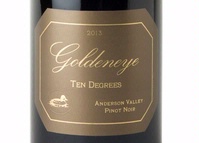 In 1997 when Duckhorn, a top Napa Valley producer that focuses on Merlot, embarked on producing Pinot Noir, they wisely sought vineyards in an area more conducive to that variety. Broadly speaking, Merlot does best in a warm climate, whereas Pinot Noir thrives in cooler climes. … Read more
In 1997 when Duckhorn, a top Napa Valley producer that focuses on Merlot, embarked on producing Pinot Noir, they wisely sought vineyards in an area more conducive to that variety. Broadly speaking, Merlot does best in a warm climate, whereas Pinot Noir thrives in cooler climes. … Read more
Maison Belle Claire, Côtes de Provence (France) 2015
($18, Romano Brands Fine wines): Regular readers of WineReviewOnline.com know I’m not a great fan of rosé — except when it has bubbles — often preferring a chilled light red wine instead. But Maison Belle Claire’s 2015 caught my attention because it delivers more complexity than most rosé. … Read more
